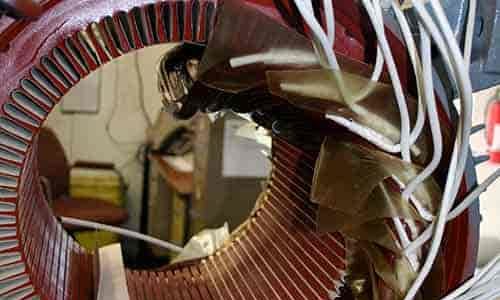Proximity: the New Business Model for Repair Services

Fortune 500 manufacturers look to speed repairs while reducing costs by working with international repair services that offer full service locations in close proximity.
Given the increasing cost of ongoing maintenance and repair at any industrial plant, many manufacturers are discovering the value and advantages of working with a repair service company that not only has the size and expertise, but also is as nearby as possible.
Proximity, after all, has many advantages for the manufacturer. First and foremost, having a repair service in close proximity means repairs can be completed faster and the maximum possible uptime maintained. Today, most manufacturing plants, need replacement parts quickly.
Proximity also means faster service and reductions in shipping costs.
For plant maintenance departments, the savings achieved by being close to a reputable repair service company impacts the balance sheet by extending the life of plant assets and keeping them in production.
Considering the vast range of parts that need servicing in any given plant – such as drives, PLC’s, servo motors, CNC machines, spindles, ballscrews, hydraulic components, robotics, material handling components, valves, safety curtains, pumps, actuators, and torque tools – the cost savings can amount to millions.
Take the case of the automobile manufacturing industry, currently enjoying a renaissance. No summer vacation for swamped Fiat Chrysler, read the headline of a May 15, 2015 article in the USA Today supplement. The story listed a major US auto engine manufacturer in Michigan as one of the impacted plants.
The plant, like so many similar large manufacturing plants, requires constant maintenance of its motors, spindles, actuators, etc. To keep up with the demand, the plant uses nearby K+S Services for its repair services on an almost daily basis. The fact that only ten miles separates the two, accounts for much of this successful relationship.
Headquartered in Southgate, Michigan, K+S Services is unique in the repair service business as it pursued a strategic model of expansion by opening new locations in close proximity to existing major plants, as well as geographic regions that attract and support U.S.-based manufacturing.
The company now operates eleven facilities across the globe, including the U.S., Mexico, Canada, and Europe. More than just a store front with a lone representative that coordinates with a larger office, these repair facilities are fully functioning shops with managers, technicians and spare parts at every location.
This business model not only delivers all the benefits of high quality repair services, but provides these services in close proximity to where they are needed.
Building on a strong relationship and performance, K+S was recently awarded UTC Supplier Gold status by demonstrating “best in class” quality and delivery performance, implementation of a lean culture, and overall strong customer satisfaction. Achieving Competitive Excellence, or ACE, is the UTC operating system for promoting quality, delivery, efficiency and customer satisfaction. UTC Supplier Gold is a program that facilitates and accelerates supplier performance improvements which recognizes suppliers who have achieved exceptional performance.
In the case of the engine manufacturer, for example, K+S Services maintains a spindle-repair facility within five miles that handles emergency needs. From a logistics standpoint alone, turnaround time is practically negligible.
If physical proximity in terms of location has its benefits, there is no relationship closer than having a repair service representative stationed within the plant itself.
In K+S’ Smart Total Asset Management Program (STAMP), customers are assigned a full-time, on-site account manager to serve as a one-stop facilitator and manager of all repairable assets within a specific plant.
This includes tracking all repairs, expediting when required, shipping or delivering to and from the nearby repair facility, maintaining database integrity, streamlining and stabilizing procedures, generating a wide variety of reports and keeping the customer informed throughout the process. The facilitator works with the plant to establish min and max levels to ensure effective lead-time fulfillment of repairs and uptime.
When the part arrives at the repair facility, technicians conduct an evaluation to identify the probable cause of failure, and then repair and test the part per the manufacturing test procedures. After being repaired the item is tested with the associated closed loop test system for the specified duration. The part and its associated documentation are then sent back to the plant.
Proof of the success of this business model rests with the number of corporations ascribing to it. Major companies such as Continental, GM, Fire Stone, Ford, Goodyear, GE Air, Chrysler, and UTC are current STAMP customers. K+S successfully services well over 800 manufacturers.
This success points to a very good reason why the local repair-service model should see even greater adoption by more manufacturers in the immediate future.
For more information, visit www.k-and-s.com